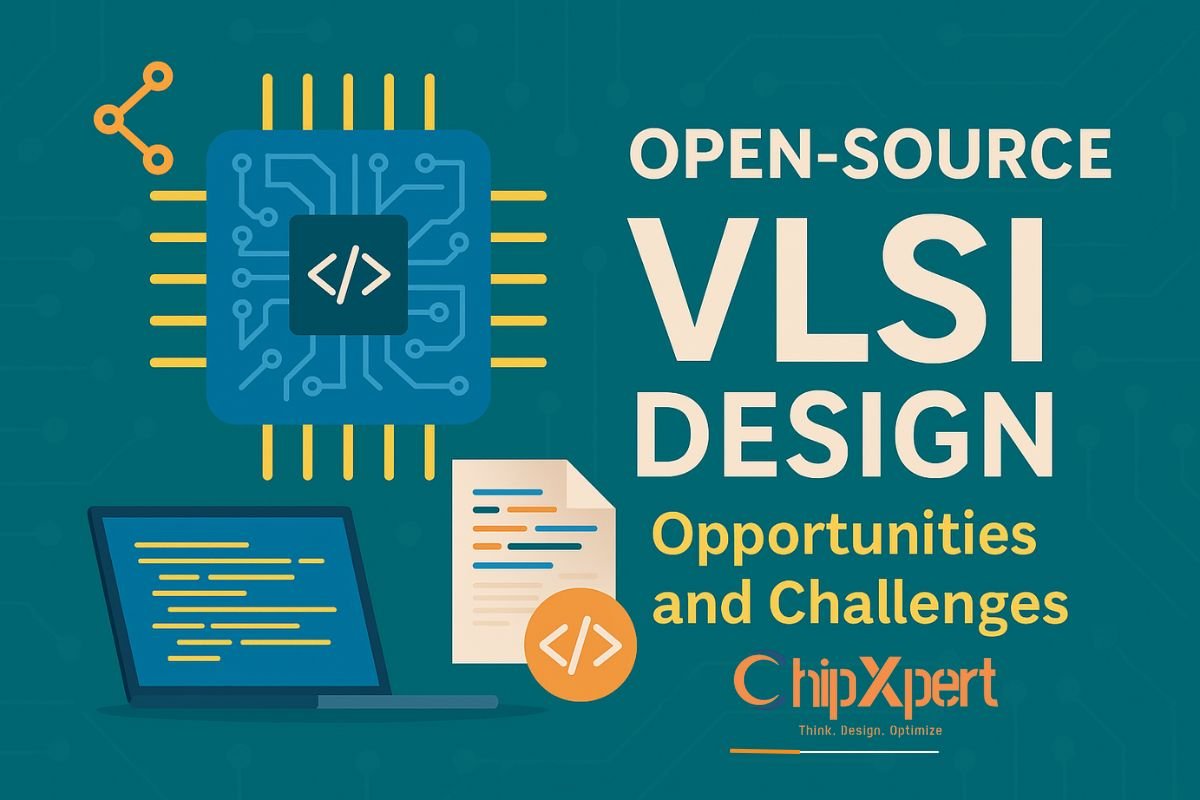Open-Source VLSI Design: Opportunities and Challenges
In the world of semiconductor design, Very-Large-Scale Integration (VLSI) has become the cornerstone of creating complex integrated circuits (ICs) that power everything from smartphones to supercomputers. Traditionally, VLSI design has been a domain dominated by major corporations, with proprietary tools and expensive software packages. However, a shift is occurring in the VLSI landscape, thanks to the rise of open-source design tools. Open-source VLSI design promises to democratize chip design by providing affordable, accessible solutions for developers, students, startups, and large companies alike. But while the opportunities are immense, there are also significant challenges that need to be addressed for this movement to achieve its full potential.
The Rise of Open-Source VLSI Design
The open-source movement has taken the tech world by storm in recent years. In the world of software, we’ve seen the success of open-source projects like Linux, which has become the backbone of many server systems worldwide. Similarly, in hardware, open-source designs like RISC-V and open-source software tools for VLSI design are beginning to change the way chips are developed.
Historically, creating chips has been a highly proprietary process. Companies like Intel, AMD, and Nvidia have their own in-house tools and designs that were not accessible to the public. This has meant that access to state-of-the-art design tools was often limited to large companies and research institutions with significant funding. As a result, small startups, students, and independent developers were left at a disadvantage.
Open-source VLSI design tools aim to level the playing field by providing free, accessible tools for chip design. These tools allow engineers and developers to design complex chips without the need for expensive proprietary software, opening the door for a wider range of innovation and collaboration in the industry.
Opportunities of Open-Source VLSI Design
- Cost Reduction for Startups and Small Companies
One of the most significant advantages of open-source VLSI design is the reduction in costs. Proprietary VLSI design software can be extremely expensive, with licenses for tools like Cadence, Synopsys, and Mentor Graphics costing tens of thousands of dollars annually. For small companies, startups, and research labs, the cost of acquiring these tools is often prohibitive.
Open-source VLSI tools eliminate these costs, allowing even small startups to compete on the same playing field as the giants of the semiconductor industry. By using open-source tools, these companies can save money that can instead be invested into R&D, marketing, or other critical areas.
- Fostering Innovation and Collaboration
The open-source model encourages collaboration and knowledge-sharing, which can accelerate innovation. Engineers from around the world can contribute to open-source VLSI tools, improving them continuously and sharing their innovations with others. This collaborative approach can lead to new design methodologies, optimizations, and breakthroughs that would be difficult to achieve in a closed, proprietary environment.
Furthermore, open-source tools create an ecosystem where knowledge and expertise can be freely exchanged. Developers and researchers can access code, documentation, and tutorials from peers, reducing barriers to entry and accelerating the learning curve. This makes VLSI design more accessible to people across the globe, regardless of their background or resources.
- Customization and Flexibility
Open-source VLSI tools allow for a level of customization that proprietary tools often do not offer. Engineers can modify the tools to suit their specific needs, adding or removing features as necessary. This flexibility can lead to better design efficiency, especially for specialized or niche applications.
For example, a developer working on a specific application, such as an AI accelerator or a low-power device, can modify the open-source VLSI tools to optimize for that particular application, rather than relying on generalized software. This level of customization can lead to better results and more innovative designs.
- Education and Research
Open-source VLSI tools are an excellent resource for educational institutions and research labs. Universities often struggle to afford expensive software licenses for their students and faculty. By using open-source tools, these institutions can teach VLSI design without the financial burden, providing students with practical, hands-on experience with industry-grade tools.
Additionally, research institutions can use open-source VLSI tools to experiment with new designs, methods, and architectures. Because the tools are open, researchers can modify them to test their ideas and explore new possibilities, without being limited by proprietary constraints.
- Support for Open-Source Hardware Projects
The open-source hardware movement, which includes projects like RISC-V, has gained significant traction in recent years. These projects focus on creating open, standardized hardware designs that can be freely used and modified. Open-source VLSI tools support this movement by providing the tools necessary to design and build open-source chips.
By combining open-source hardware projects with open-source VLSI design tools, developers and researchers can create fully open systems that can be freely shared, modified, and distributed. This has the potential to disrupt the traditional semiconductor industry, allowing anyone with the skills and resources to design their own chips.
Challenges of Open-Source VLSI Design
- Lack of Industry-Wide Standardization
One of the biggest challenges facing open-source VLSI design is the lack of industry-wide standardization. The VLSI design process involves many different tools for tasks like layout, synthesis, simulation, and verification. In the proprietary world, these tools are often tightly integrated, making the design process seamless.
However, in the open-source world, there is no guarantee that different tools will work well together. The lack of standardization can lead to compatibility issues and inefficiencies. For example, a designer might use one open-source tool for simulation and another for layout, but the two tools may not support the same file formats or design rules, leading to problems down the line.
- Limited Commercial Support
While the open-source community can provide support for VLSI tools, it is often not as reliable as the support provided by commercial vendors. Companies like Cadence and Synopsys offer dedicated support teams that can help resolve issues quickly. In contrast, open-source tools typically rely on community forums or documentation, which may not always provide timely or comprehensive solutions.
This lack of commercial support can be a significant challenge for companies or researchers working on time-sensitive projects. In such cases, the absence of a dedicated support team can slow down the design process and lead to frustration.
- Tool Maturity
While open-source VLSI tools have come a long way, many are still not as mature or feature-rich as their proprietary counterparts. For example, some open-source tools may lack advanced optimization features or high-level integration with other software. This can make it more difficult for designers to achieve the same level of performance or efficiency as they would with proprietary tools.
As the open-source VLSI ecosystem matures, these tools are likely to improve, but for now, designers may have to make trade-offs between cost and performance when using open-source tools.
- Complexity of VLSI Designs
VLSI designs are inherently complex and require a high level of expertise. Open-source tools can make the design process more accessible, but they still require a deep understanding of the underlying principles of VLSI design. For developers who are new to the field, this can be a steep learning curve, especially without the extensive documentation or tutorials that often come with commercial software.
- Security and IP Protection
Another challenge with open-source VLSI design is ensuring the security and protection of intellectual property (IP). When a design is open-source, it can be freely accessed, modified, and shared. While this fosters collaboration, it also raises concerns about the potential misuse of sensitive designs.
For companies that rely on proprietary IP to maintain a competitive edge, open-source design tools can pose a risk. They must take precautions to protect their designs and ensure that their IP is not inadvertently exposed or misused.
Conclusion
Open-source VLSI design is undoubtedly an exciting development in the world of semiconductor design. It presents numerous opportunities, from reducing costs and fostering innovation to providing educational resources and supporting open-source hardware projects. However, the open-source VLSI movement must overcome several challenges, including the lack of standardization, limited support, and the complexity of VLSI designs.
As the open-source ecosystem matures and more developers, companies, and research institutions get involved, the benefits of open-source VLSI design will continue to grow. By addressing the current challenges and working together as a community, the open-source movement has the potential to transform the VLSI design landscape and make chip design more accessible, affordable, and innovative for everyone.



